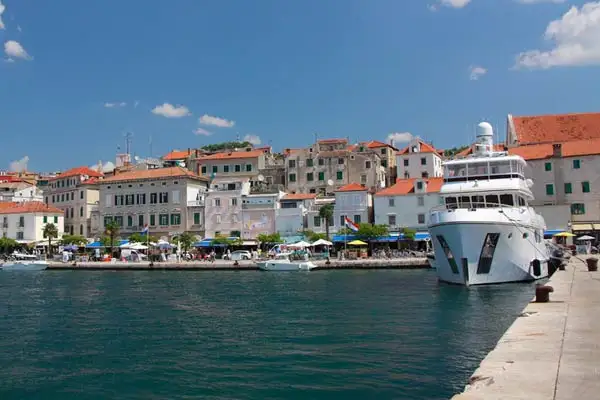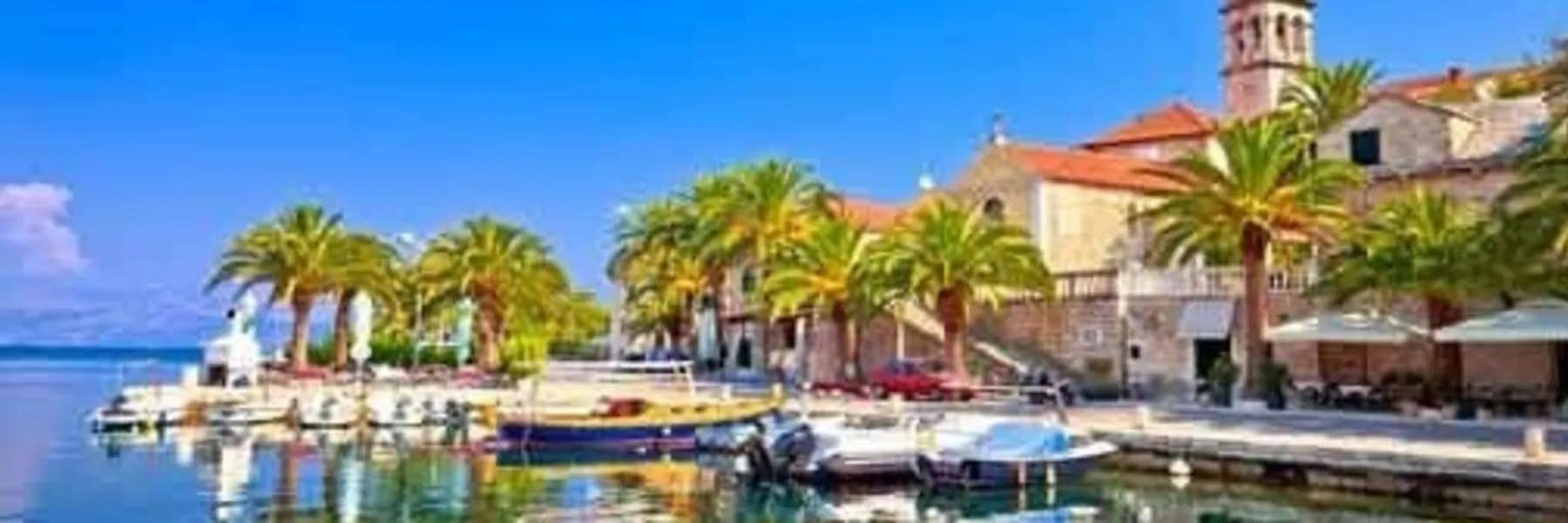The island of Vis, off Croatia’s Dalmatian coast, isn’t as well-known as it deserves to be.
The island’s main seaside town was first settled by Greek colonists from Sicily around 2,300 years ago. Since then, it has seen prominence as a harbor for both the Romans and the Venetians. Its elegant Venetian architecture is frequented by cats and Franciscan nuns, and you can often detect the smell of freshly baked bread wafting through its narrow streets.
By far the loveliest and most effective way to see Vis—and a dozen other stunning locations dotted throughout this part of the Adriatic—is by sailboat. Experienced sailors may know this already. But landlubbers who have never tried sailing, and think it’s beyond their reach due to the expense or difficulty, should be prepared to change their minds.
No Sailing Experience Necessary
If you don’t know how to sail and don’t know anyone who does, the most straight-forward solution is to arrange your sailing trip through a charter company. These companies offer a huge range of boats for hire, and they can organize an experienced local skipper on your behalf for an extra $180 or so a day. If the boat is damaged due to the skipper’s mistakes, then the charter company’s insurance should cover it.
A basic two-cabin yacht (with four sleeping berths) will set you back about $1,180 a week during the shoulder season. (This is known as the “bareboat charter price”; it doesn’t include items like fuel costs and harbor fees.) If you have a larger group, you can get a four-cabin yacht (with eight berths) for around $1,530 a week. This price becomes much less daunting when it’s divided among seven or eight people. For a smaller outfit with good prices and a great reputation, try Sail Charter in Croatia (see Sail-charter-in-croatia.com.)
Besides keeping you away from rocks and rogue waves, a good skipper can advise you on the most sensible sailing route each day, based on weather and wind direction. He can guide you into an idyllic cove or steer you towards a marina (with showers and other amenities) as the situation demands. One of the most enjoyable aspects of sailing is poring over a tattered map at dawn, and pinpointing the spot where you’ll drop anchor that evening.
Skippers can also save you money by finding mooring spots away from busy marinas.
"Anchoring for the night in bays is often free of charge.”
Know Before You Go
July and August are the most popular and expensive months for sailing in Croatia. Try to plan your trip in the shoulder seasons of May or October to avoid sweltering heat, crowded harbors, and inflated marina fees and charter costs.
If you charter a yacht, be aware that there are a few extra fees in addition to the price you’re quoted. Ask about one-off cleaning fees (generally $70 to $140) and fuel costs (in case the wind dies).
Harbor prices vary widely. Some marinas can charge as much as $80 or $90 a night, even during the shoulder season. Anchoring in bays is often completely free, while mooring to a sheltered buoy costs about half the price of a marina.
If you’d like to flit between Croatia and other countries like Italy, you should make sure that you get your passport stamped upon every entry and exit. All “ports of entry” (including most larger marinas such as Šibenik and Split) have customs and immigration officers. You should report to them whenever you enter or leave a country.
Monohull or Catamaran?
Monohull yachts lie deeper in the water and tend to feel the effects of rough seas more dramatically than catamarans do. The main advantage to monohulls is that their char-ter price can be cheaper. On the other hand, the shallow hull and maneuverability of catamarans means that they could end up saving you some money on harbor fees by allowing you to spend the night in shallow bays, instead.
Must-See Towns

The Dalmatian coast has plenty of beautiful spots besides Vis. Šibenik is an even more elegant Venetian town, with a magnificent Renaissance-era cathedral, a lovely seafront, and perhaps one of the most relaxing monastery gardens in Europe at the Church of St. Lawrence. Farther south, you can stop for a night or two at Trogir’s bustling ancient core, located on a small island connected to the mainland by bridge. Along the way, Primošten makes an excellent overnight stop. Almost completely surrounded by water, it’s another example of the Venetian knack for combining beauty and impregnability. (Some truly magnificent views can be had from the grounds of 15th-century St. George Church.)
And who could fail to mention the city of Split, just south of Trogir? The city center is located within the ruined external walls of Roman Emperor Diocletian’s pal-ace. Be sure to visit the clifftop Klis Fortress (entry $3.50), which is just outside Split. It commands an important mountain pass and dates from classical antiquity, when this area was known as Illyria. If you have time, wander down to the Roman ruins of Salona (entry also $3.50), which feature an impressive stadium and amphitheater.
For something different, try sailing upriver past dramatic cliffs to the ancient Illyrian town of Skradin. Moor at the little wharf across the lake from the town—and if it’s a nice evening, row your dinghy to the middle of the water for a truly unforgettable sunset.
Related Articles
The Enchantment of a Retirement in Croatia
